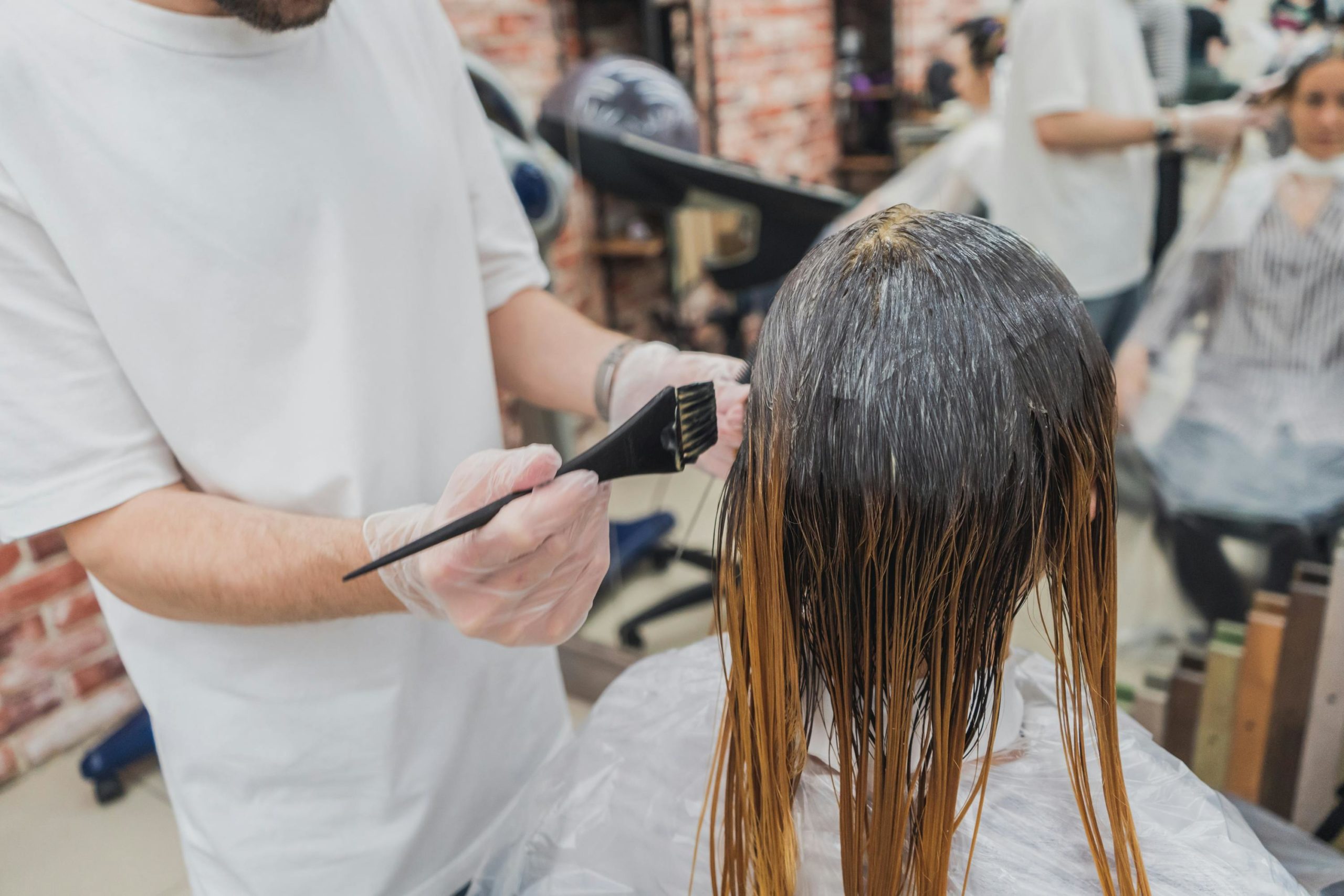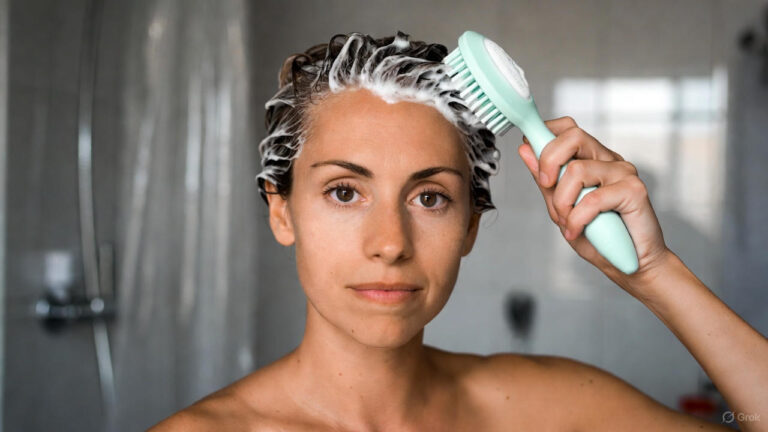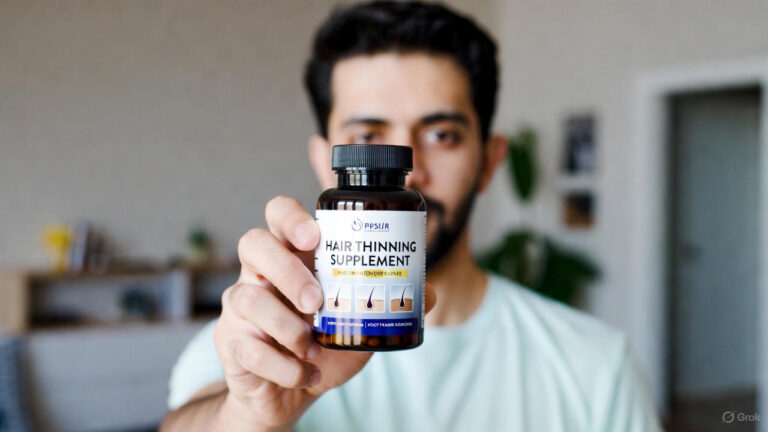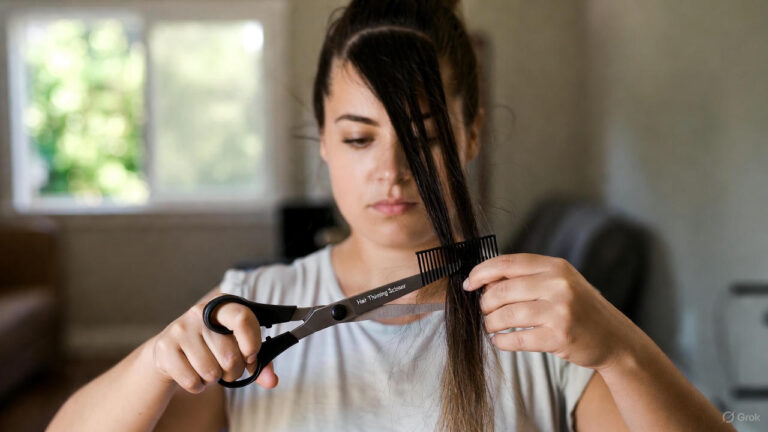Your hair color can be a powerful form of self-expression, reflecting your personality and style. However, choosing the right hair color to complement your skin tone can be a daunting task. With countless shades and hues to choose from, it’s easy to feel overwhelmed.
In this comprehensive guide, we’ll demystify the process of selecting the perfect hair color for your skin tone.
Understanding Skin Tones and Undertones
Your skin tone refers to the surface color of your skin, while undertones are the subtle hues beneath the surface that can influence how certain colors look on you.
- Warm Undertones: If you have warm undertones, your skin has a yellow, peachy, or golden hue. Warm undertones are typically complemented by hair colors with red, orange, or yellow undertones.
- Cool Undertones: Cool undertones have hints of pink, blue, or purple beneath the surface. Hair colors with cool undertones, such as ash or platinum blonde, tend to complement cool-toned skin.
- Neutral Undertones: Some individuals have neutral undertones, meaning their skin has a balanced mix of warm and cool tones. Neutral undertones offer more flexibility when choosing hair colors, as they can complement both warm and cool hues.
Now that you have a basic understanding of skin tones and undertones, let’s explore how to choose the right hair color to enhance your natural features.
Selecting the Right Hair Color for Warm Undertones
If you have warm undertones, you’ll want to choose hair colors that complement the golden or peachy hues in your skin. Shades of red, copper, caramel, and honey blonde are excellent options for individuals with warm undertones. These warm, vibrant hues can enhance your complexion and add warmth to your overall look.
When selecting a hair color for warm undertones, it’s essential to consider the intensity of the color. Opt for rich, saturated shades that will make your skin glow and bring out the warmth in your complexion.
Avoid hair colors with cool undertones, such as ash brown or platinum blonde, as they can clash with your warm skin tone and appear unnatural.
Choosing Hair Colors for Cool Undertones
If you have cool undertones, your skin likely has hints of pink, blue, or purple beneath the surface. Hair colors with cool undertones, such as ash brown, platinum blonde, and cool-toned brunette shades, are ideal for complementing your complexion. These colors can help balance out the natural coolness of your skin and create a harmonious, cohesive look.
When selecting a hair color for cool undertones, it’s essential to avoid warm or brassy hues, as they can clash with your cool complexion and appear unflattering. Instead, opt for colors with blue or violet undertones, which can enhance the natural coolness of your skin and create a flattering contrast.
Considerations for Neutral Undertones
If you have neutral undertones, you have the flexibility to experiment with a wide range of hair colors. Neutral undertones allow you to pull off both warm and cool hues with ease, making you a versatile canvas for hair color experimentation.
When choosing a hair color for neutral undertones, consider your personal preferences, as well as any specific features you want to highlight. Whether you opt for a warm, sun-kissed blonde or a cool, ash brown, choose a hair color that makes you feel confident and enhances your natural beauty.
Tips for Choosing the Right Hair Color
- Consult a Professional: If you’re unsure about which hair color will best complement your skin tone, consider consulting a professional hairstylist. A trained stylist can assess your skin tone and recommend hair colors that will flatter your complexion.
- Consider Your Lifestyle: When choosing a hair color, consider your lifestyle and maintenance preferences. If you lead a busy lifestyle or prefer low-maintenance hair, opt for a hair color that requires minimal upkeep.
- Experiment with Temporary Colors: If you’re hesitant to commit to a permanent hair color, experiment with temporary hair dyes or semi-permanent colors. Temporary colors allow you to test out different shades without making a long-term commitment.
- Take Your Eye Color into Account: Consider your eye color when choosing a hair color, as certain shades can enhance your eye color and create a striking contrast.
- Embrace Your Natural Beauty: Above all, choose a hair color that makes you feel confident and comfortable in your own skin. Embrace your natural beauty and choose a hair color that reflects your personality and style.
Conclusion
Choosing the right hair color for your skin tone is a nuanced process that requires careful consideration of your unique features and preferences. By understanding your skin tone and undertones, you can narrow down your options and choose a hair color that enhances your natural beauty. Whether you have warm undertones, cool undertones, or neutral undertones, there’s a perfect hair color out there waiting to complement your complexion and elevate your look.
FAQs
Q1: Can I dye my hair a drastically different color from my natural hair if I have warm undertones?
Yes, individuals with warm undertones can experiment with a wide range of hair colors, including shades of red, copper, and honey blonde. However, it’s essential to choose a hair color that complements your warm undertones and enhances your natural beauty.
Q2: How can I determine my skin undertone?
One way to determine your skin undertone is to look at the veins on the inside of your wrist. If your veins appear greenish, you likely have warm undertones. If your veins appear bluish or purplish, you likely have cool undertones. If you can’t discern whether your veins appear greenish or bluish, you may have neutral undertones.
Q3: Can I change my hair color at home, or should I visit a salon?
While it’s possible to change your hair color at home using DIY hair dye kits, visiting a salon is often recommended, especially if you’re making a significant change or if you’re unsure about which hair color will best complement your skin tone. A professional hairstylist can assess your skin tone and recommend hair colors that will flatter your complexion.
Q4: How often do I need to touch up my hair color?
The frequency of hair color touch-ups depends on several factors, including the type of hair dye used, your hair growth rate, and your personal preferences. Generally, permanent hair colors may require touch-ups every 4-6 weeks to maintain the color’s vibrancy and coverage.



